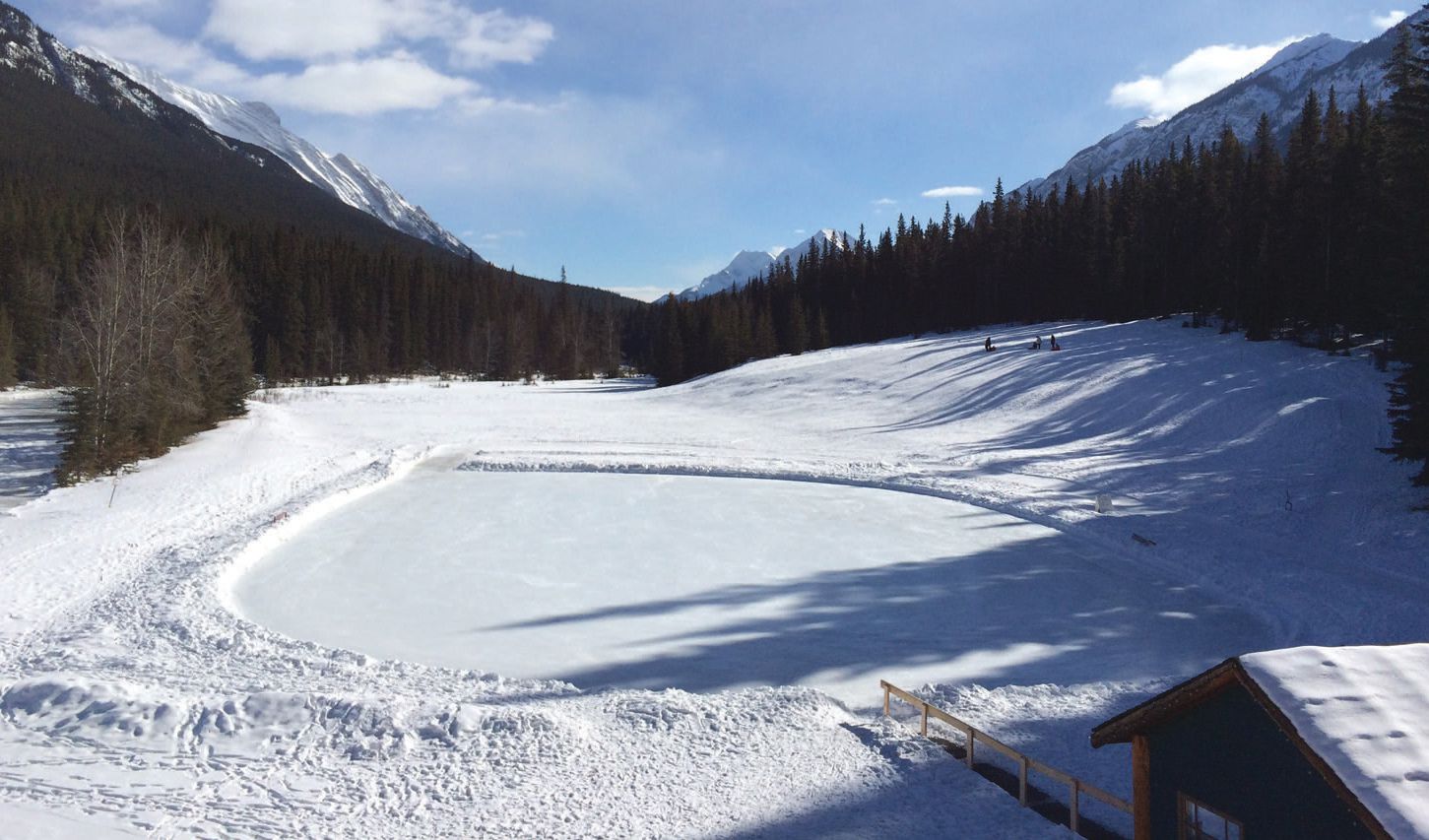Fast Ice
Evan Zabawski | TLT From the Editor February 2015
Colder ice is more slippery.

WE THINK OF ICE AS BEING SLIPPERY, but those who spend a lot of time on it know that how slippery it is depends on temperature. Last February my family went out for a day of winter fun, namely skating and tobogganing (that is, sledding for those unfamiliar with Canadian lingo). The particular day we chose ended up being on the cold side, around -25 C (-13 F). The upside to this weather was two-fold―cold weather culls crowds and ice is faster.
This tribological property of ice is well-known to hockey players and ice makers at arenas. Warmer ice, called slow ice, tends to be softer with a rougher surface and tends to produce more snow when skated on. Fast ice is colder and smoother, and less snowy and chippy. Hockey players prefer the latter, while figure skaters prefer the former. It is possible for an ice rink to provide both conditions, depending on the event.
Ice makers will maintain an ice temperature of -9 C (16 F) for hockey and -5.5 C (22 F) for figure skating. The small difference in temperature makes the ice softer for figure skating landings, but puck handling more difficult for hockey players. Even if the ice is fast at the beginning of a hockey game, it may become significantly slower as the game progresses.
The common conception is that ice’s slipperiness comes from a layer of water created by pressure-induced melting. This theory became popular after 1850 when Michael Faraday observed the fusion of two ice cubes after squeezing them together. He postulated that ice contained a solid but liquid-like invisible molecular layer that was stable at subzero temperatures. However, the average skater exerts a pressure of about 50 psi, which does not cause enough of a melting temperature decrease to melt ice.
In a 1939 article, Frank P. Bowden and T.P. Hughes suggested frictional heating created the layer of water. They conducted a series of experiments in an ice cave in Switzerland, measuring the static and kinetic friction of wood and metal surfaces. Their conclusions were based on their data, which showed that metal had higher friction than wood.
The lubrication is not due to water from pressure melting or frictional heating but from the molecules in the top layer of ice. Professor Gabor A. Somorjai and Michel van Hove discovered this layer in 1996 using low-energy electron diffraction to study the surface of three thin layers of ice. This technique reveals the surface structure in the same way x-ray diffraction determines the crystal structure of solids.
They expected to find three similar scattering signatures but found only two. This was due to the molecules of the upper third layer behaving much like a liquid, vibrating at three or four times the amplitude of the lower layers, which was not visible to the technique they were using. Further study showed the molecules only moved up and down, not side to side as they would in true liquid state.
Not only did Somorjai confirm the existence of Faraday’s liquid-like layer but also its existence at subzero temperatures since the layer continued to be found down to -235 C (-391 F). At -157 C (-250 F), he found the ice has a slippery layer only one molecule thick, but as the ice is warmed the number of these slippery layers increases.
Part of the difference between fast ice and slow ice can be explained by this increase, since the skate blade will have to slosh through more of these layers. This also explains why a puck travels differently depending on ice temperature, since it clearly cannot generate the pressure or friction to instantaneously liquefy ice.
Last December researchers unveiled a new solid phase of ice with the lowest known density. It is called ice XVI and is the 17th solid phase of ice discovered to date. Who knew ice had so many phases? I guess you could say that when it comes to understanding everything about ice, we are just scratching the surface.
 Evan Zabawski, CLS, is the senior reliability specialist for Fluid Life in Edmonton, Alberta, Canada. You can reach him at evan.zabawski@fluidlife.com
Evan Zabawski, CLS, is the senior reliability specialist for Fluid Life in Edmonton, Alberta, Canada. You can reach him at evan.zabawski@fluidlife.com.